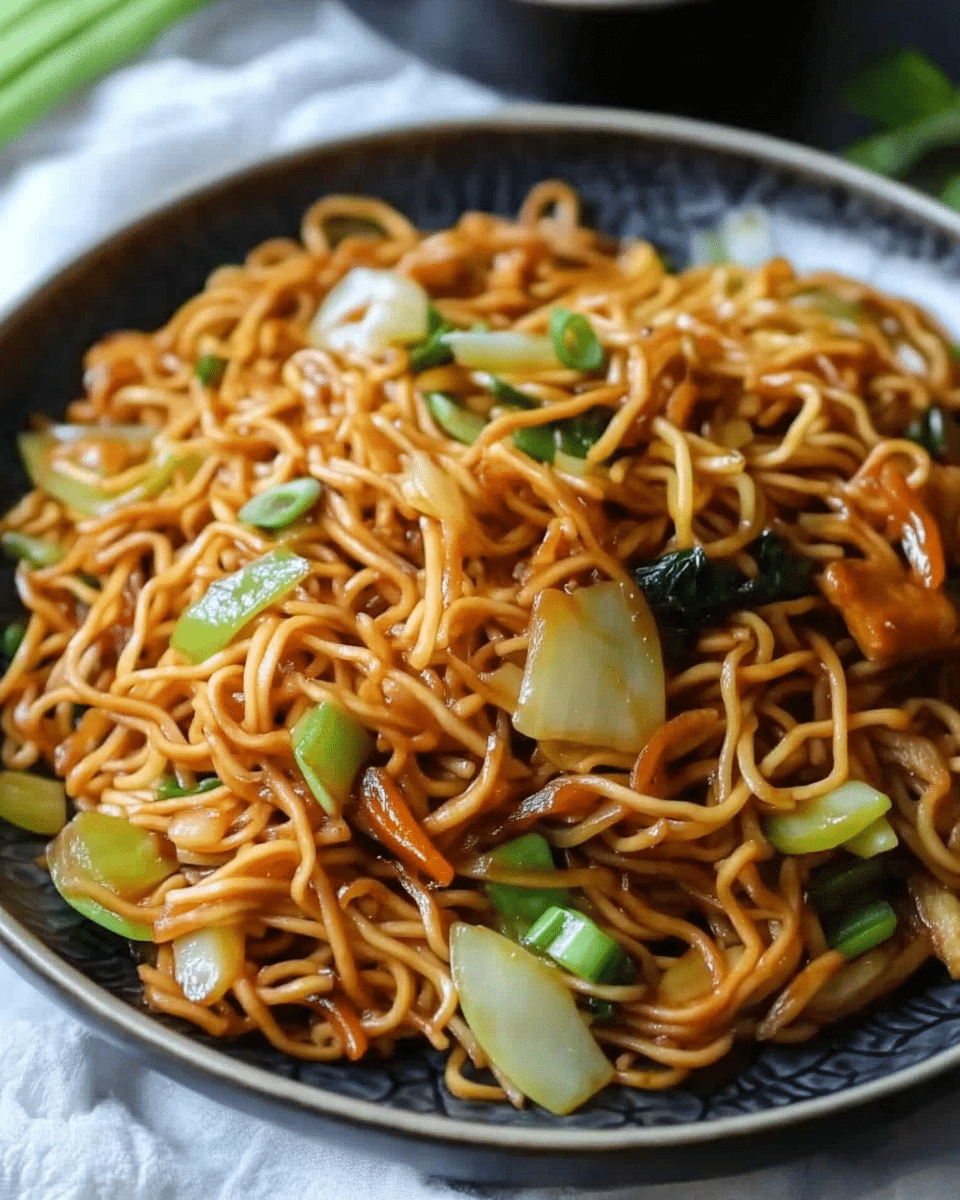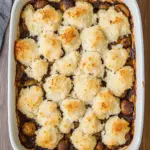Craving Panda Express Chow Mein but don’t want to leave the house? This Restaurant Remix recipe brings the classic takeout flavor into your kitchen in just under 30 minutes! With a savory sauce, tender noodles, and the perfect crisp vegetables, this homemade version of Chow Mein rivals the original without the takeout price tag. You can even add your favorite protein like chicken, beef, or shrimp. This quick and easy recipe is a must-try for busy nights when you want a satisfying and flavor-packed meal!
Full Recipe:
Ingredients
-
1 yellow onion, thinly sliced
-
2 stalks celery, sliced
-
1/2 head of cabbage, shredded
-
2 scallions, sliced (reserve some for garnish)
-
1 pack of chow mein or yakisoba noodles with seasoning packet
-
2 tbsp olive oil
For the Sauce
-
3 tbsp soy sauce
-
2 tbsp oyster sauce
-
1 tsp sesame oil
-
1 tsp garlic paste
-
1 tsp ginger paste
-
1 tbsp brown sugar
-
1/2 tsp white pepper
-
1 tbsp cornstarch
Directions
-
Make the Sauce:
In a small bowl, whisk together soy sauce, oyster sauce, sesame oil, garlic paste, ginger paste, brown sugar, white pepper, and cornstarch. Set aside. -
Cook the Vegetables:
Heat olive oil in a large skillet over medium-high heat. Add the onion, celery, and cabbage. Sauté until fragrant and tender, about 5-7 minutes. -
Add the Noodles:
Add the noodles and the seasoning packet to the skillet. Pour in the sauce and toss everything together until well combined and evenly coated. -
Finish Cooking:
Cook for an additional 3-5 minutes, until the noodles are heated through and slightly crispy in some spots. -
Serve:
Garnish with sliced scallions and serve immediately.
Nutrients (Approximate per serving)
-
Calories: 330 kcal
-
Carbohydrates: 42g
-
Protein: 9g
-
Fat: 13g
-
Saturated Fat: 2g
-
-
Sodium: 850mg
-
Fiber: 4g
-
Sugar: 6g






